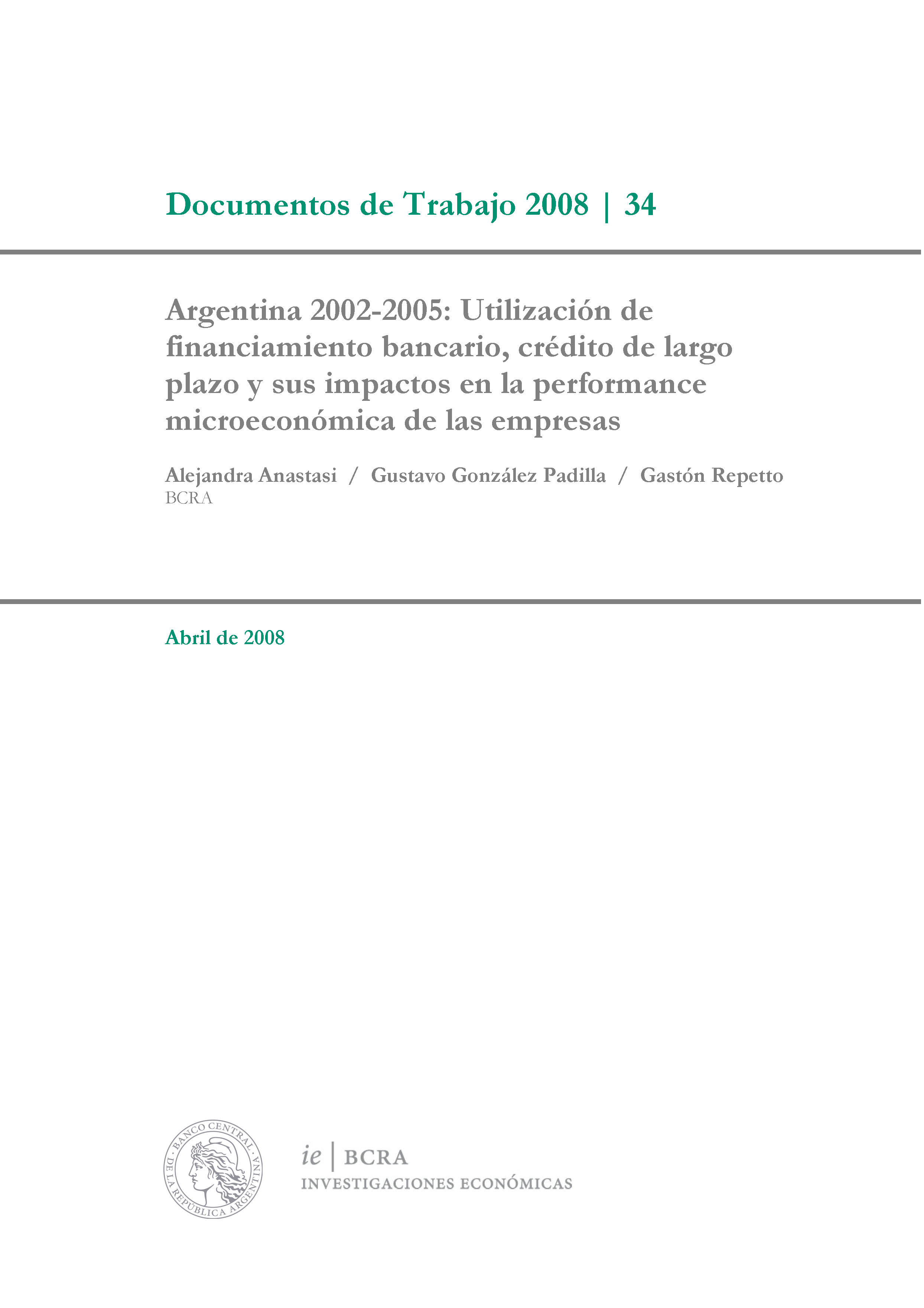Argentina 2002-2005: Use of bank financing, long-term credit and their impacts on the microeconomic performance of companies
Working papers | 2008 | N 34
Keywords:
Long-term credit, Productive investmentAbstract
The starting point for any policy decision aimed at promoting long-term bank financing must be that it is scarce and that its provision is important for economic development. In the case of the Argentine Republic, long-term bank financing reached, as of December 2005, approximately 8.85% of GDP for the total and 5.10% of GDP for those corresponding to the non-financial private sector, if considers as such those with terms longer than 12 months, and 7.16% of GDP and 3.75% of GDP, respectively, if those with terms longer than 24 months are understood as such. If we consider as a reference that the IBIF and investment in durable equipment were around 21.46% and 8.49% of GDP, respectively, it is evident that the participation of long-term bank financing is, at least, limited. If we focus on the depth of the Argentine financial system, the evidence is not much more encouraging. Out of 150,960 assistance to legal entities given by financial entities regulated and supervised by the Central Bank of the Argentine Republic as of December 2005, only 16,030 (approximately 10.6%) had maturity periods greater than 12 months and only 8,733 (approximately 5 .8%) terms greater than 24 months. Of the 73,329 legal entities that received credit assistance, only 12,126 (approximately 16.5%) had maturities of more than one year, while only 7,084 (approximately 9.7%) had maturities of more than two years. In this context, our work aims to study, as of December 2005, to what extent there are restrictions on the use of long-term financing among companies in Argentina, to see how the restrictions depend on observable characteristics of the relevant economic agents and the assists; and analyze how the use of bank financing in general and long-term financing in particular affected the microeconomic performance of companies in the period 2002-2005. The conclusion reached is that, in the case of Argentina, there is a starting point to promote long-term bank financing. This is because we have been able to document the scarcity of long-term financing and the importance it has for economic development.


